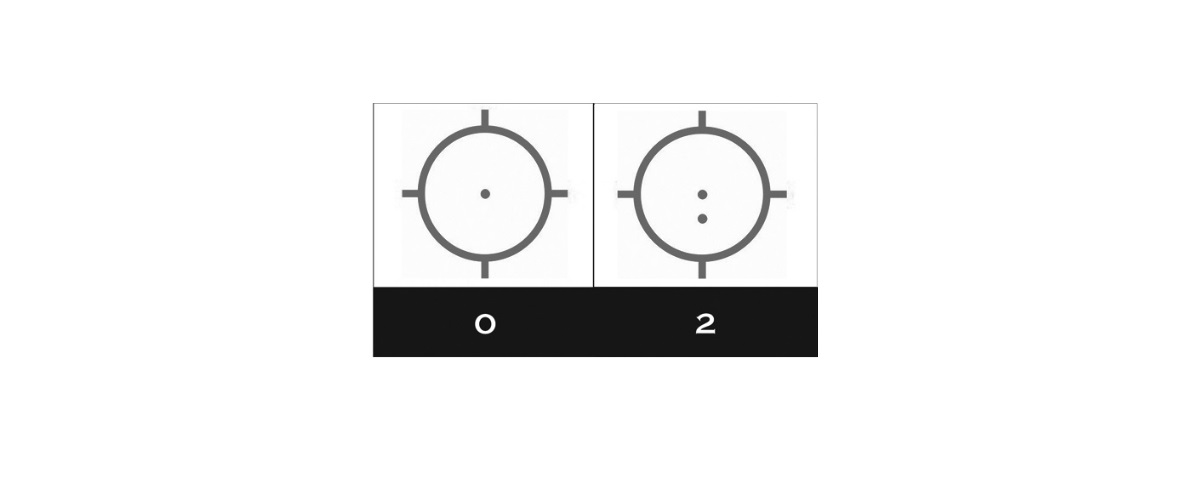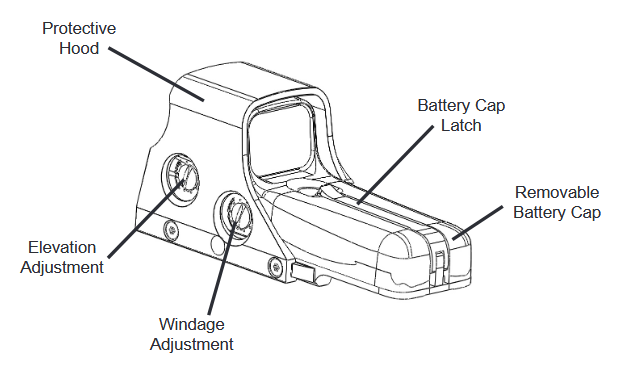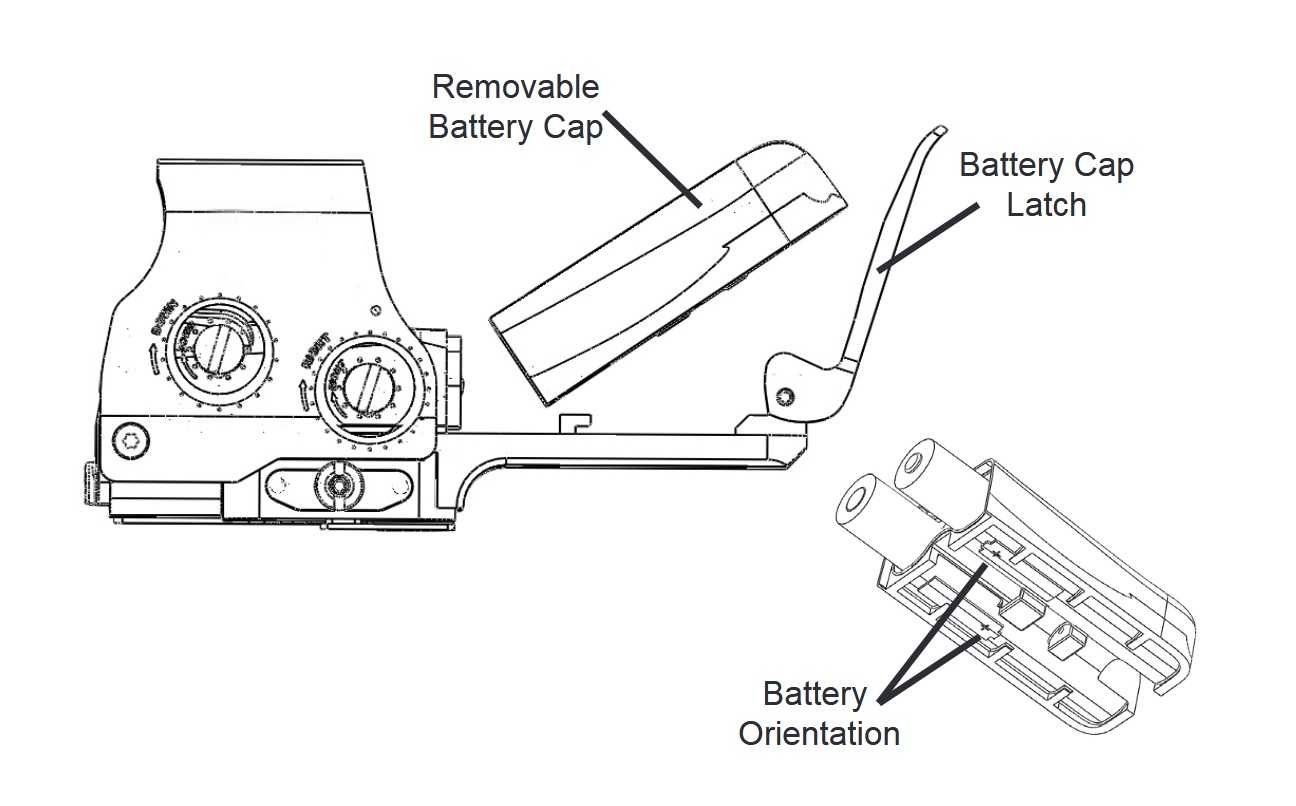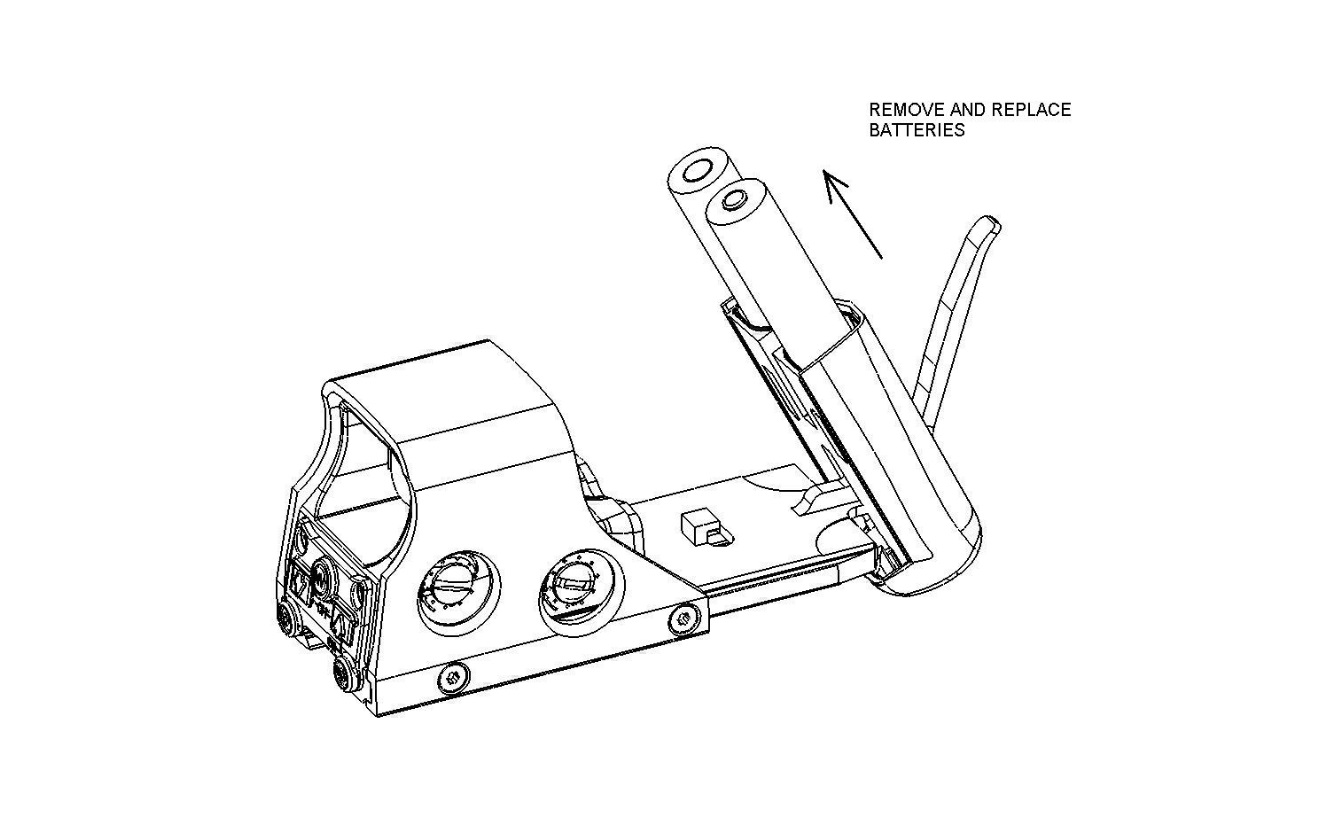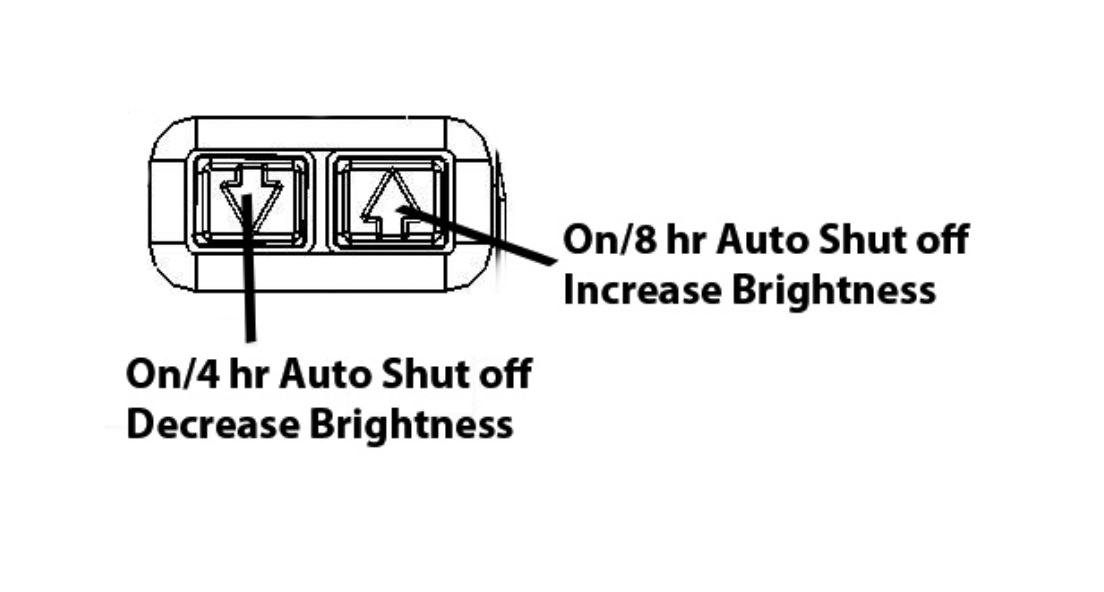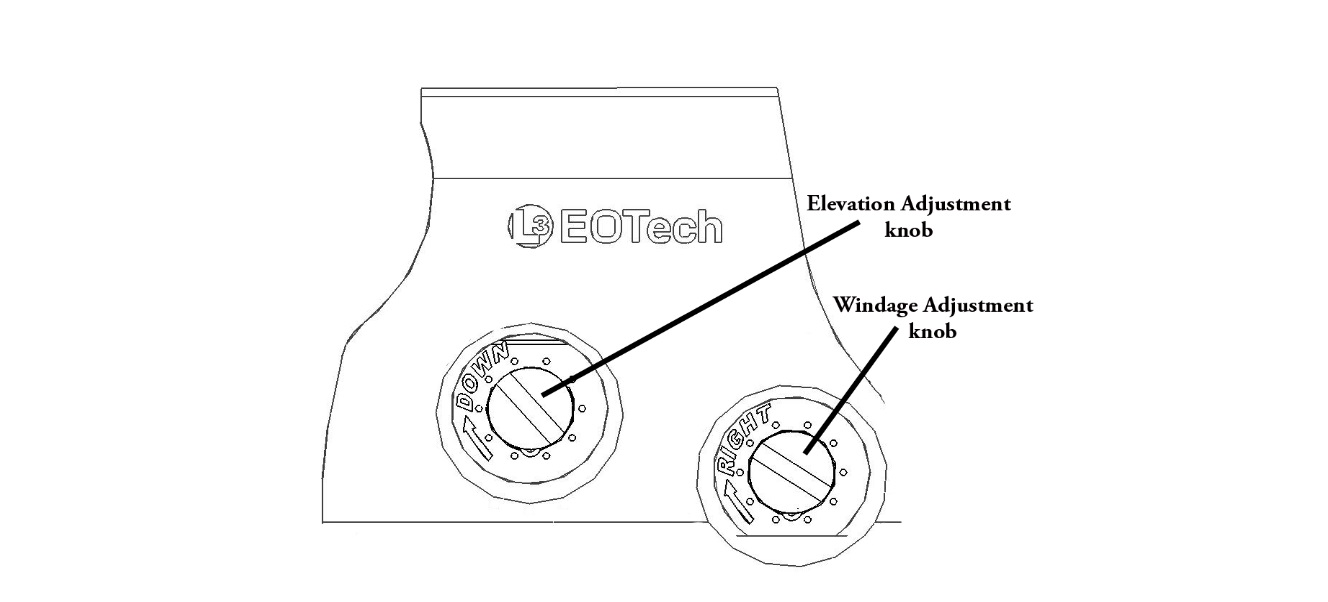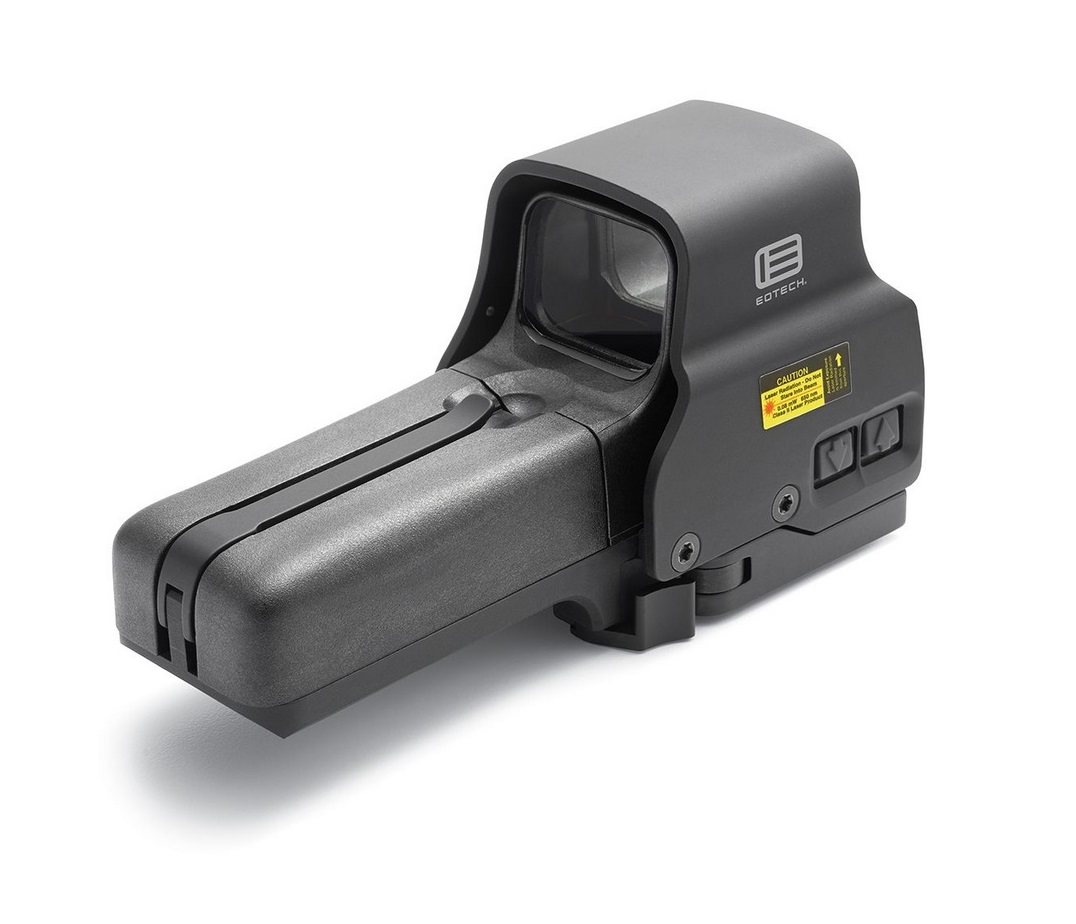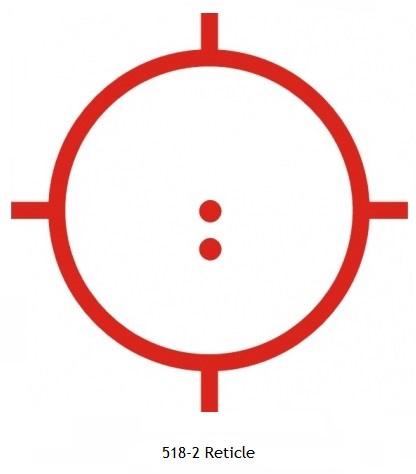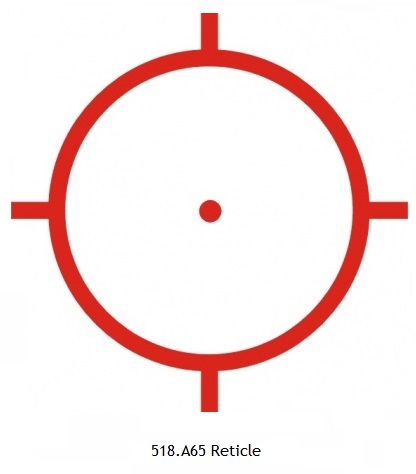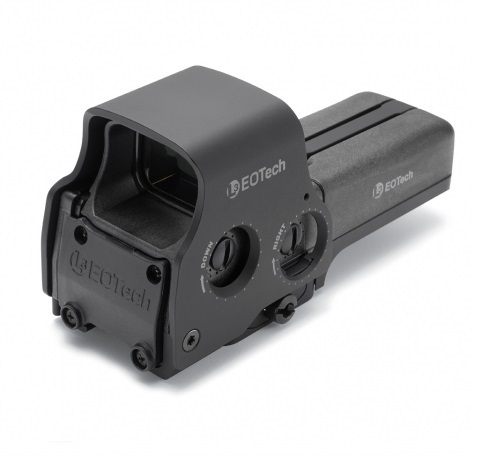Description
Great for nearly every shooter, the 518.A65 allows you to quickly acquire prey, allowing you to become more efficient with your shots. An efficient red dot firearm scope enables you to find your target quickly and re-acquire after your shot. Because of the EOTech Holographic Weapon Sight, buying a top grade red dot riflescope has never been a more suitable approach.
We are required to adhere to a Minimum Advertised Price (MAP) by the manufacturer, and anyone not listing this minimum price is breaking the rules or selling counterfeit, so if you find a better price advertised anywhere, please let us know and we will try to meet or beat that price!
Made in USA
Night Vision Compatibility: No
If you want Night Vision Compatibility, look at the 558.A65. Same great sight and features plus Night Vision Compatibility.
Includes:
- HWS 518
- Quick-Start Guide
- Warranty Card
- 2x AA Alkaline Batteries
- Protective Case
Specifications:
- Button Position: Side of Optic
- L x W x H: 5.6″ x 2″ x 2.9″ (142.2 x 55.9 x 73.7 mm)
- Weight: 13.8 oz (391.2 g)
- Water Resistant: 10ft. (3 m) depth
- Mount: 1″ Weaver or MIL-STD-1913 rail
- Windage & Elevation Adjustment: 0.5 MOA per click
- Button Location: Side
- Brightness: 20 daylight settings
- Power Source: 2 x 1.5 V AA batteries – Supports lithium, alkaline or rechargeable
- Operating Temperature: -40°F to 140°F (-40°C to 60°C)
- Battery Life:
-Lithium: 2,500 continuous hours at nominal setting 12 at room temperature
-Alkaline: 2,200 continuous hours at nominal setting 12 at room temperature
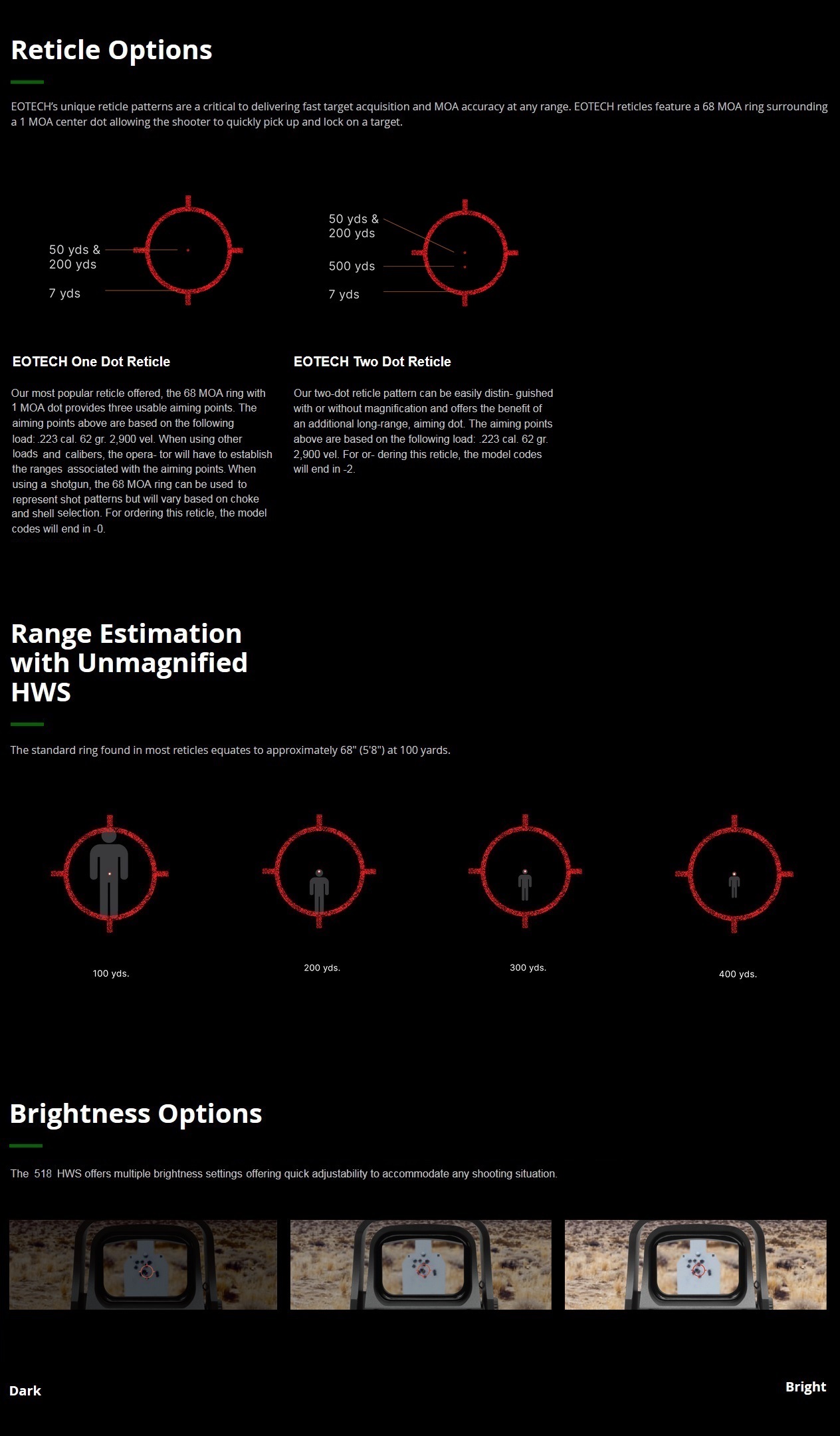
This manual is an overview of the 518 HWS (Holographic Weapon Sight), and will define the basic operation, features/benefits, and options of this proprietary optical system. The HWS is a state of-the-art optical sighting system, employing holographic sighting technology for small to medium caliber weaponry and launching type plat–forms. The HWS utilizes holographic optics fabrication technology that is used in the production of advanced heads up display in attack fighter aircraft for targeting, gauge reading, weapon system verification, etc. L3 EOTECH has miniaturized the sophisticated sighting heads up display system into a compact and rugged package for use on small arms and other weapon platforms.
Key Attributes
The 518 HWS is a lightweight, non-magnifying, optical sight designed for close to mid range engagements. It allows very fast target acquisition and engagement at short ranges while providing aiming capability out to 300 meters equal to or better than iron sights. The major combat advantage of the HWS is extremely rapid reticle-on-target acquisition. As quickly as a target is identified, the holographic reticle can be superimposed on the target. The sight allows operators to maintain eye contact on the target and to place the holographic reticle onto the target without shifting focus. Operators can quickly acquire the target and reticle in the same focal plane for fast and accurate shot placement. The HWS appears to project the holographic image of a reticle on the target plane. The sight can be used as a bright open reticle image or a fine dot which is limited only by the acuity of the shooter’s eye. The heads up display window allows an undistorted and unrestricted view of the target. The 512 is offered with only one Reticle Option shown below:
• 0 – 68 minute ring with vertical and horizontal stadia and a 1 MOA aiming dot.
• 2- 68 minute ring with vertical and horizontal stadia and (2) 1 MOA aiming dots (HHSIII)
The HWS offers extremely fast target acquisition in Close Quarter Battle (CQB) using the large ring, and aiming precision in longer range engagements (using the MOA Dot) without obscuring the target. Another advantage of the HWS is the full field of view which allows the operator better situational awareness. The HWS employs a true heads up display (HUD) window that eliminates blind spots and constricted or tunnel vision associated with scope sights. Controls are inset into the HWS housing with no protruding knobs, battery compartment, or rings obscuring the target.
Another advantage of the HWS is the full field of view which allows the operator better situational awareness. The HWS employs a true heads up display (HUD) window that eliminates blind spots and constricted or tunnel vision associated with scope sights. Controls are inset into the HWS housing with no protruding knobs, battery compartments, or rings obscuring the target. Utilizing natural binocular vision is an advantage of this sighting system, as well as additional threat identification through increased operator situational awareness and peripheral vision.
The primary use of the HWS is for the M4A1 carbine and CQBR in Close Quarters Battle. The HWS is not however, limited to carbines. The HWS can also be used on medium caliber machine guns, grenade launchers, bolt guns, crossbows, and less than lethal projectile launchers. The sight provides a 1X (no magnification) sight picture and is not designed as a long range sight system, however, it can be used as effectively as iron sights on targets to 300 meters. The advantage of the HWS is that it provides the operator superior shooting performance, rapid reticle-on-target acquisition, full field of view and accurate shot placement. The HWS can be naturally employed by all levels of users, from novice to the most highly trained operator.
518 Equipment Description
Operation
• Optics: Transmission holography
• Magnification: 1x
• Eye Relief: Unlimited
• Length/Width/Height: 5.6”x2.2”x2.9” (142 x 55.9 x 73.7mm)
• Weight: 13.8 oz (391.2g)
• Water Resistant: Submersible to 10 ft (3m)
• Sealing: Fog resistant internal optics
• Color/Finish: Non-reflective black
• Adjustment (per click): Approx. 0.5 MOA (1/2” (12.7mm) at 100 yds (91m)) when zeroing
• Adjustment Range: +/- 40 MOA travel
• Mount: 1” (25.4mm) Weaver or MIL-STD 1913 rail
Display Window
• Optical Surfaces: Anti-Reflection coating on external surfaces
• Window Dimensions: 1.20” x 0.85” (30 x 23mm)
• Front Window Material: Glass 1/8″ (3.17mm) thick
• Rear Window Material: Laminate 3/16” (4.76mm) thick
• Field of View 100 yds (91m): 30 yds (28m) at a 3” eye relief
• Reticle Options:
0 – 68MOA circle with quadrant ticks with 1 MOA aiming dot
2- 68MOA circle with quadrant ticks with (2) 1MOA aiming dots (HHSIII)
Electrical
• Power Source: 2 x Alkaline or Lithium batteries
• Battery Life: Approximately 2,200 continuous hours at nominal setting 12 with Alkaline and approximately 2,500 continuous hours at nominal setting 12 with Lithium at room temp
• Brightness Settings: 20 settings with scrolling feature
• Auto Battery Check Indicator: Flashing reticle upon start-up
• Auto Shut-down: At 8 hrs- programmable to 4 hrs
Location and Description of Major Components
Holographic Window– Contains the embedded holographic reticle pattern that forms a virtual image of the reticle when illuminated by laser light.
Protective Hood– Preassembled, protective hood increases durability of sight housing and protects the sight from impact damage.
Battery Latch – A cam lever that secures the removable battery compartment to the sight and prevents water, dirt, or grime from entering the battery housing.
Battery Cap – Protective housing that contains the power source for the HWS. The compartment is easily and quickly removed for the replacement of batteries.
Universal Mount– Integrated base to mount to either a 1” (25.4mm) Weaver or MIL-STD-1913
rail.
Windage Adjustment– Adjusts the point of aim at 100 yards approx. 1/2 inch per click in a leftward and rightward direction when zeroing.
Elevation Adjustment – Adjusts the point of aim at 100 yards approx. 1/2 inch per click in an upward and downward direction when zeroing.
On/Off, NV Mode, and Brightness Switches– Raised button control interface allows the operator to perform and adjust user settings for appropriate and preferred conditions
OPERATING INSTRUCTIONS
This section describes the features and operating instructions of the 518. Please read the instructions carefully before mounting and using the sight, and always practice proper firearm safety.
The HWS will include:
• Sight assembly
• 2 x Alkaline AA batteries
• Product Registration/Warranty Card
• Quick Reference Card
Description of Components, Controls, and Indicators
The HWS uses a laser to illuminate a holographic reticle pattern embedded in the display window and forms a virtual image of a reticle pattern. The shooter looks through the display window and sees a bright red image of a reticle pattern projected onto the target plane. No light is projected onto the target plane. The HWS has no magnification.
Hood
The HWS is equipped with a protective hood. This hood is pre-assembled at the factory. Should your hood require repair or replacement, please contact your unit armorer for repair, replacement, or contact the manufacturer (L-3 EOTech) for repair or replacement.
Battery
Two initially supplied (2) AA alkaline batteries power the 518 HWS. The HWS is designed to maintain constant brightness at a particular setting as the batteries drain down. The reticle brightness will not fade gradually as the batteries run down, but rather, shut down abruptly. The first indication of the batteries draining is the reticle blinking when the unit is turned on. Another indication of low batteries is the reticle pattern blinking off and on during recoil. With high recoil guns, this can occur before the battery check indicates low battery condition. If the reticle pattern blinks off and on during recoil or turns off suddenly, replace the batteries. Please read and follow the battery replacement and battery check procedures described in this Manual. It is always good practice to replace the batteries with a fresh one before a mission.
Replacing the Batteries
Remove the battery compartment by lifting up on the locking cam lever and carefully sliding the battery compartment away and up from the sight housing. After the battery compartment is removed, slide the batteries out and replace them with a fresh set. The labels on the bottom of battery compartment show the correct battery orientation. Always make sure the gasket is free of dirt before the battery compartment is reinstalled or the seal may be compromised. To reinstall the battery compartment, point the sight towards the ground and slide battery compartment onto base. Make sure there is enough clearance between the contact and the batteries to avoid bending the contacts. Hold the battery compartment down firmly against the base and close the locking cam.Before you push down on cam lever, make sure the battery compartment sits all the way down and is parallel to the base. Verify correct battery installation immediately by turning on the sight and checking if the holographic reticle appears. If the batteries are left in the sight backwards, they will be drained of their power.
Electronic Features
All electronic controls are via pushbutton switches located at the rear of the unit housing. To ensure proper operation of the pushbutton switches, press firmly on the center of the switch.
1. ON/ Auto Battery Check:
Pressing the Up or Down Arrow pushbutton switches will turn the sight ON at Level 12. See item 4 under this section for a description of Auto shutdown. The sight will automatically perform a battery check every time it is turned on. The reticle will blink when the batteries have between 20 percent or less useful life left.
2. OFF:
To turn the sight off, simultaneously press both the UP and DOWN arrows. Verify that the sight is on/off by looking through the heads-up display window for the reticle.
3. Brightness Adjustment:
Pushbutton switches vary the brightness intensity of the holographic reticle pattern. Pressing the UP arrow or DOWN arrow switch will change the brightness level up or down. There are twenty (20) daytime brightness settings provided to allow the user to adjust the reticle brightness to their preference.
4. Auto Shutdown:
The HWS has an auto shutdown feature. If the sight is turned on by pressing the UP button, it will automatically shut itself OFF 8 hours after the last pushbutton control is used. The sight will automatically shut OFF after 4 hours if it is turned on by pressing the DOWN button.
Windage and Elevation Adjustment
The HWS features click mechanisms for elevation and windage adjustments. The elevation and windage adjustment are located on the right-hand side of the sight. The knob towards the front is the windage adjustment and the knob towards the rear is the elevation adjustment. Both of these adjustment mechanisms are grooved with a slotted screw head and require the use of a screwdriver, coin, or spent brass to turn. The elevation and windage adjustments are shown above. For both elevation and windage, each click will change the sights point of aim approximately 1/2 Minute of Angle (MOA), ¼ inch (6.35mm) at 50 yards (45.7m), or ½ inch (12.7mm) at 100 yards (91m) when zeroing. Also, one full rotation of either knob will change the point of aim approximately 10 MOA, 5 inches (127mm) at 50 yards (45.7m), or 10 inches (254mm) at 100 yards (91m) when zeroing. To move the point of impact UP, turn the elevation adjustment LEFT. To move the point of impact RIGHT, turn the windage adjustment RIGHT. The HWS elevation and windage adjustments are factory collimated with the bore of the rifle parallel to the mounting rail. The sight should be close to mechanical zero when mounted on a properly installed rail. Do not turn the adjustments before mounting the sight on the firearm. Be sure to check that the mount and sight are securely mounted after initial firing
CAUTION – When encountering an increase in resistance in adjustments, the end of the adjustment range has been reached. DO NOT turn the adjustments any farther, serious damage may occur to the sight.
Preventive Maintenance Checks and Services (PMCS)
OPERATOR LEVEL MAINTENANCE
The operator is limited to replacing batteries and cleaning the battery compartment and outer housing surfaces of the sight.
REPLACING BATTERY
See the heading ‘Replacing Batteries’ under section Description of Components, Controls, and Indicators. Do not use deteriorated or corroded batteries. Inspect batteries for rips, tears, or cuts in the housing. If there is any exposed, internal content of the battery, it could potentially effect the operation of the sight.
OPERATOR CLEANING INSTRUCTIONS
1. The optical system and the window are coated with anti-reflection material. When cleaning the glass surfaces, first blow away any dirt and dust. Fingerprints and lubricants can be wiped off with lens tissue or a soft cotton cloth, moistened with lens cleaning fluid or glass cleaner sold
in any camera store. Never clean the glass surface with a dry cloth or paper towel; always dampen the glass surfaces prior to cleaning.
2. No maintenance is needed on the sight’s surface, except to occasionally wipe off with a soft cloth. Use only a water-based cleaner such as glass cleaner, ammonia, or soap and water. Never use any solvent-type cleaner such as alcohol or acetone. Do not use gun cleaner to clean or lubricate the HWS.
3. All moving parts of the sight are permanently lubricated. Do not try to lubricate them.
4. Never disassemble the sight’s optical assembly! The optical cavity is purged, nitrogen filled, and sealed to achieve fog resistant performance. Disassembly will void the warranty and damage the sight

